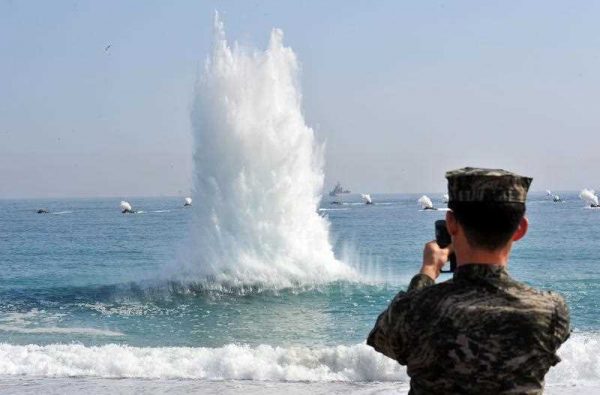Three characteristics define the current world.
The first is a tightening of belts and budgets throughout the West in the wake of the 2007–08 global financial crisis. The loss of jobs, and plummeting asset values, has deprived governments of tax revenue. The vogue for budget austerity that followed has further reduced resources for government action. As a result, the governments that typically provided the bulk of international security public goods face increasingly straitened resources and great difficulty mustering responses to dangers and instability. Defence budgets in the West will tighten even more over the long term as those societies age.
Second, the immediate challenge posed by this reduction of resources is exacerbated by a broader set of security threats and challenges. Traditional security concerns — the exercise of raw power, such as the seizure of territory — remain a problem, but planners must now anticipate a more diverse set of problems including: terrorism, the proliferation of weapons of mass destruction, piracy, cyber threats, pandemic diseases, climate change, natural disasters, environmental crises, economic imbalances, urbanisation and modernisation. The diffusion of technologies means that many capabilities once the province of advanced nations can now be mastered by less developed nations and even non-state actors, which further complicates security planning and responses to perceived threats.
The third key characteristic of the global order is the growth of capabilities among nations that were once seen as peripheral to the provision of international security goods. Fifty years ago, East Asia was a backwater: countries were poor and still emerging from the destruction of war or, in many cases, their colonial pasts. Today, two of the world’s top three economies are in East Asia, and the rest of the region is growing at a breakneck pace. East Asian societies and economies are increasingly sophisticated, rank among the world’s leading trading nations and innovators, and have increasingly far-flung interests and ambitions. Australia, Japan and South Korea are among the United States’ most important allies and partners. In other words, East Asia is now capable of producing security, not just consuming it.
The task for countries which aspire to a leadership role globally or within a region is marshalling dwindling resources to tackle a mounting list of problems by more evenly distributing the provision of global public goods among old and new powers.
Leaders must ensure that responsibilities are distributed on the basis of capabilities, minimising duplication of effort and the waste of resources while ensuring that gaps are filled. If efficiency were the deciding factor, ‘brick and mortar’ security institutions would be set up to ensure the best use of resources and preparation. And while alliances — the obvious manifestation of that approach — continue to serve vital purposes, they are a 20th-century security model. Today, coalitions shift according to focus and circumstances. ‘One size fits all’ thinking is no longer going to work. Local solutions — forged by the governments closest to a particular problem — will be most suitable. This in large part explains the preference for ‘tailored’ responses to security threats.
This process demands a different form of leadership from that of the past, one that in many if not most cases relies on persuasion, rather than hard power. Raw power will still have utility, of course, but the glue for effective relationships will be the ability to facilitate collective action. Ironically, for many observers, the US attempt to move to this new model is seen as a sign of weakness, not adaptation to new political, economic, and security realities. Washington’s efforts to modernise relationships, to link alliances in new ways, and enlist new partners in new security arrangements are typically characterised as attempts to stave off decline when they are in fact smart adjustments to this new world.
This approach also obliges us to think differently about the ‘fact’ of ‘US decline’. Put aside the folly of linear projections that prove time and time again susceptible to adjustment. Ignore the siren song of ‘relative gains’ that seduces so many strategists. Disregard the fact that the US was never all powerful nor capable of dictating outcomes as many like to believe.
Instead, the United States should acknowledge that ‘the rise of the rest’ is an opportunity to demonstrate a new kind of strength, built upon the values it has with its allies and partners championed and the normative and institutional framework that they built in the aftermath of World War II. The United States and its partners constructed an international system that created stability, honoured human dignity and in the process facilitated a historical expansion of wealth and prosperity. This history validates US aspirations to lead.
As the world seeks to organise international action to combat shared problems and address shared concerns, Washington’s record since World War II, with all its blemishes, stands it in good stead as a leader. The key is recognising and articulating the needs of this new paradigm.
Brad Glosserman is executive director of Pacific Forum CSIS, Honolulu.

